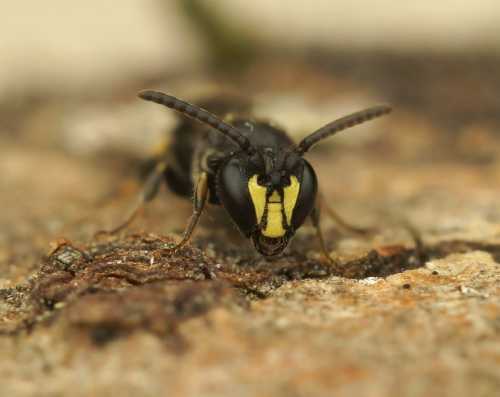Colletidae Bee Family
This family of bees includes species with a diverse spectrum of physical characteristics, which includes thy fairy bees at one end to larger, more robust species at the other.
Some are hairy, others are hairless, some have a 'waspish' appearance.
However, all Colletids line their brood cells with a waterproof, cellophane-like substance1,2 and have short, bi-lobed (bifid) tongues1,3.
No cleptoparasitic or eusocial species are found in this bee family3.
Subfamilies Of The Colletidae Bee Family
There is some varied opinion regarding the number of subfamilies in this group.
According to Wilson & Messinger Carril - The Bees In Your Backyard, there are five subfamilies worldwide in the Colletidae family , yet Packer (author of Bees of The World: A Guide To Every Family1), there are nine.
Here are the nine subfamilies described by Packer:
Paracolletinae
The smallest colletid subfamily (as currently understood) with one genus and eight species1. Packer states that it has been suggested this subfamily be united with another subfamily, the Diphaglossinae.
Diphaglossinae
Mostly large, very hairy bees.
Some fly in dim light conditions, whilst others are truly nocturnal (see: Do Bees Fly At Night?).
Neopasiphaeinae
Comprises nearly 450 ground-nesting bees.
Callomelittinae
Endemic in Australia, this is a small subfamily.
Colletinae
Consists of four genera and consisting of relatively hairy bees. Species are found everywhere except Australasia.
Scraptrinae
Consists of one diverse genus with almost 70 species, mostly restricted to southern Africa.
Euryglossinae
Most bees in this group are relatively hairless and are small. This group carries pollen back to their nest cells inside their digestive system. Found abundantly in Australasia, especially where eucalypts are in flower. More than 400 species have been described.
Xeromelissinae
Small bees with little hair found in Central and South America and the Lesser Antilles.
Hylaeinae
The 'masked bees', this groups consists of seven genera, all but one of which is restricted to Australasia. Some Australasian species are metallic.
Example genera in Colletidae Bee Family
Hylaeus - Yellow-face bees
Small bees with distinctive yellow markings on their faces.
 Hylaeus communis - Common yellow-face bee
Hylaeus communis - Common yellow-face beeColletes - Plasterer bees
Colletes species are medium-sized bees. This is a diverse genus with 518 valid species distributed in all biogeographic realms, except Australasia and Antarctica4.
They include species such as the Ivy bee - Colletes hederae and the Vernal mining bee - Colletes cunicularius.
 Colletes cunicularius - Vernal mining bee
Colletes cunicularius - Vernal mining beeReferences
1. Bees of The World: A Guide To Every Family, Laurence Packer. Princeton University Press, Princeton & Oxford, 2023; ISBN: 798-0-691-22662-0.
2. Wilson & Messinger-Carril; The Bees In Your Backyard, Princeton University Press 2016.
3. Field Guide to Bees Of Great Britain And Ireland by Steven Falk, Bloomsbury 2015.
4. Rafael R. Ferrari, Thomas M. Onuferko, Spencer K. Monckton, Laurence Packer, The evolutionary history of the cellophane bee genus Colletes Latreille (Hymenoptera: Colletidae): Molecular phylogeny, biogeography and implications for a global infrageneric classification, Molecular Phylogenetics and Evolution, Volume 146, 2020, 106750, ISSN 1055-7903, https://doi.org/10.1016/j.ympev.2020.106750.(www.sciencedirect.com/science/article
/pii/S1055790320300221).



